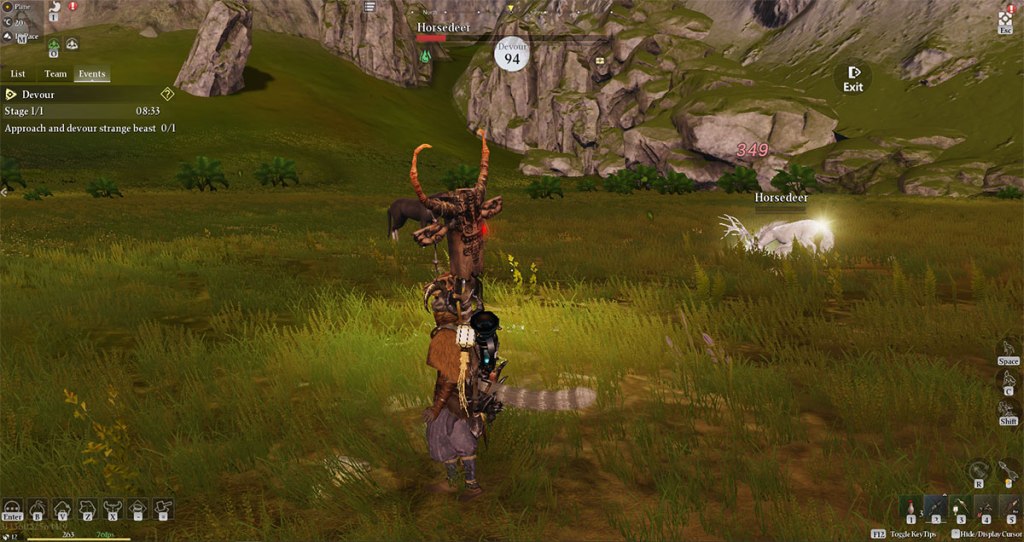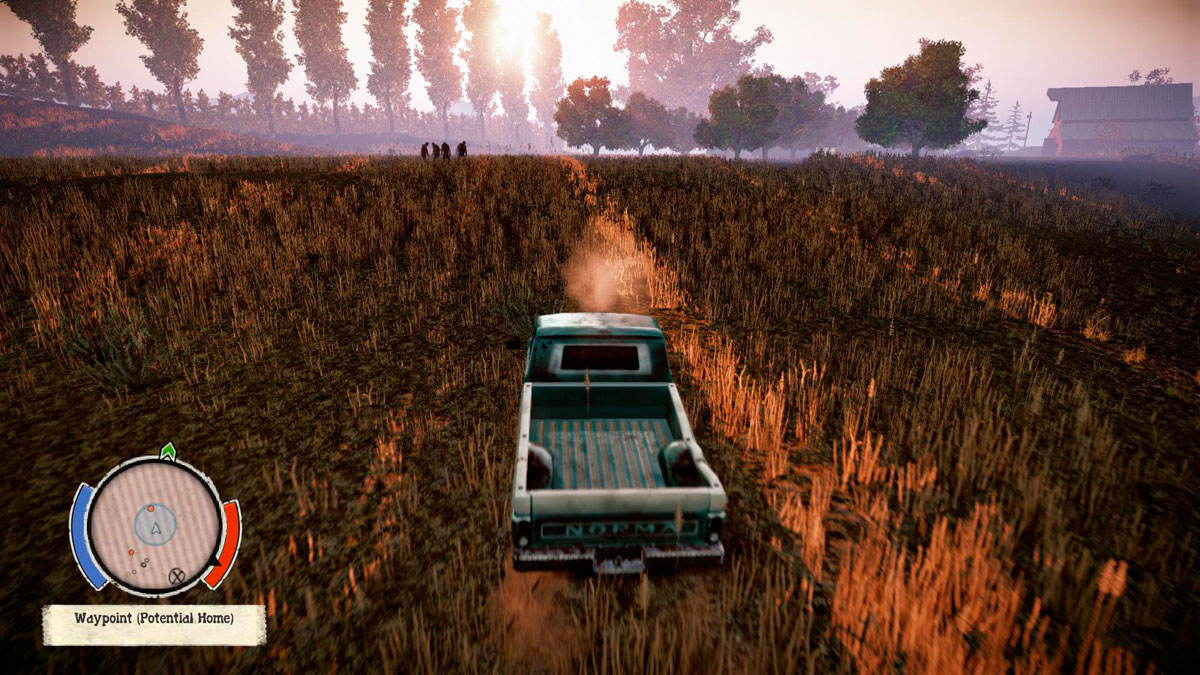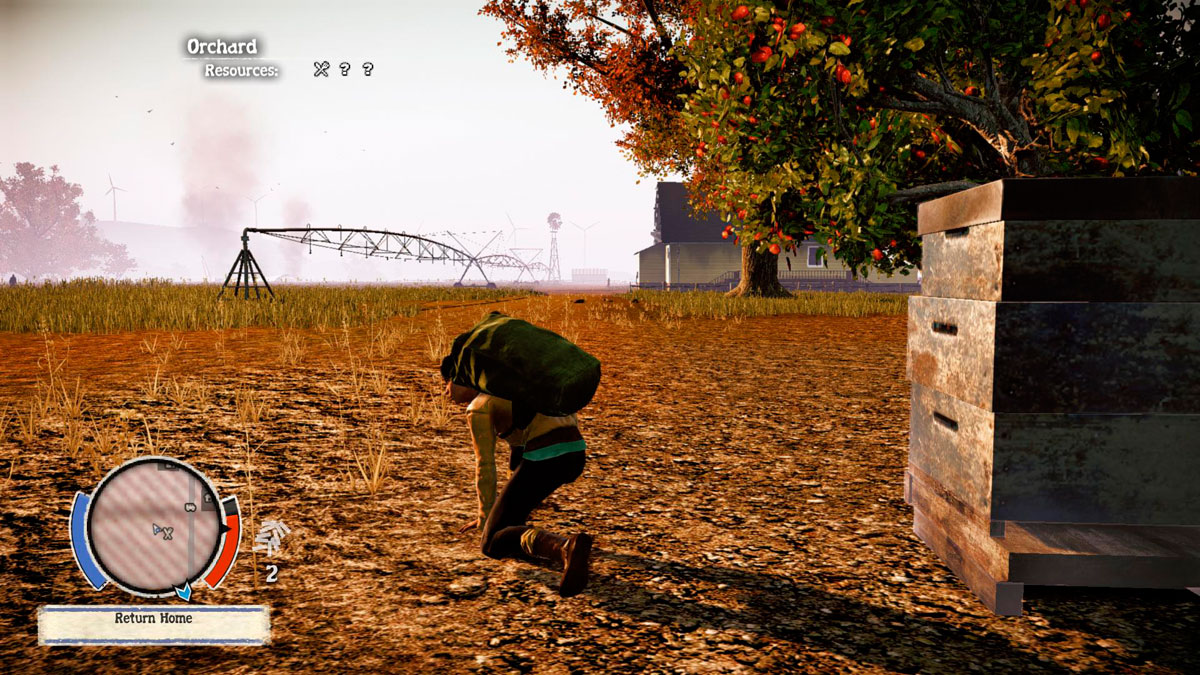Blog Archives
Impressions: Chimeraland
After reading a half-dozen posts over at Inventory Full, I decided to see what the hell Chimeraland was all about.

After a few hours of playing… yeah, maybe I’m missing something, but this feels like some poor mobile port Asian jank.
The character creation process is pretty outrageous, if you’re into that. I think someone mentioned that there are 18 different species you can choose from, but on top of that you can use the age slider to play as literal children. Not just human children, but cow and sheep children. And that’s just the start! There are ridiculous sliders that let you change your ears and cheekbones into non-Euclidean shapes. Some serious Mario 64 title screen vibes.

All you need to know about the PC version of this game is that Full Screen is not yet implemented. I was today years old when I found out that “Full Screen” was a game setting that had to be built and not, you know, something that is a default state of being. The game is filled to the brim with UX jank like this. For example, not having any apparent way to increase turning speed. Or having the camera default to action-cam style, but having dozens of buttons that need clicked with the mouse. Finally realized that you need to press the [`] button to get a mouse cursor active, which is fine, but any attempt to unselect something puts you right back into action-cam mode.
The translation runs the gamut from poor to nonexistent. Hard to fault them on this front, considering that there are zero US/EU servers – the game prominently displays “SEA” on the launcher.
In principle, Chimeraland is doing some interesting things in the MMO space. The ability to build a house anywhere you please. Being able to capture and either ride or bring into battle any creature in the game world. Light survival elements. Seeing all your weapons on your back at once is cool.

Chimeraland is also objectively worse than any game that already does any one of these things. Hell, the whole time I was playing I kept asking myself why I wasn’t just playing ARK. Or Fallout 76. Or Guild Wars 2. While I was pondering, some players decided to fight a “grand” enemy outside my house. I joined in a bit, then kept eating ranged AoEs because the dash-move wouldn’t activate, and finally died. I respawned and got back in the mix, then the creature died, and… nothing. No idea whether I gained XP for that, or should have had a chance at loot, or whether my dying removed that chance. Felt like a big waste of time.
Which, incidentally, describes the rest of my game experience with Chimeraland.
Falling Behind the Curve
As you may have noticed in the sidebar and/or prior post, I have picked up Dragon Age: Inquisition. I have not played it as much as I should have been however, because it is the first PC game in which I’ve ran into a hardware wall.
I am still strategically turning settings down, but I’m talking about Medium settings and getting maybe 40 FPS on a good day. Yesterday, my gaming session was cut short by the game randomly diving down to a literal 4 FPS level every 30 seconds. I “solved” that issue by spending a long time on Youtube weeding through arcane practices, many of which sounded suspiciously similar to “blow on the dice to make them roll high” from D&D players. One of the suggestions was to turn off FRAPS and other FPS counters; I was, of course, unable to ascertain whether it actually worked or if things ran better because I was unable to actually tell how bad it was running.
In any of these sort of situations, I come back to my experience with Skyrim. Basically, if your game doesn’t look as good as Skyrim on my machine, that’s your fault. Perhaps it’s not entirely fair to have that as a benchmark – I do notice a lot more NPCs milling about in Inquisition – but I still end up questioning whether my rig is truly outdated or if the designers got lazy with the PC optimization.
Regardless, my Inquisition FPS woes motivated me to start looking at weak points in my gaming rig:
- i5-2500K Processor (4x 3.30GHz/6MB L3 Cache)
- 8 GB [4 GB X2] DDR3-1600
- NVIDIA GeForce GTX 560 Ti – 1GB – EVGA Superclocked – Core: 900MHz
Now, I’ve heard a lot of people talk about getting GTX 970 cards recently, so I figured that my ole 560ti might finally have been gotten to its obsolescence phase. On the other hand, I am not about to spend $300+ on a new graphics card either. What I want slash need is a way of determining the price points of various GTX cards in terms that I can understand.
For example, while I like this chart, it doesn’t really tell me much:
Actually, the chart did tell me quite a bit, as I was very seriously considering the GTX 750ti because bigger numbers equals better, right? I would have been quite pissed at that $100+ purchase for the tiniest of gains, let me tell you. But off-hand, I have no idea what 20,000 more… units translates into FPS terms. Eyeballing PCPartPicker.com shows that a 760 costs $170, the 770 is $260, and the 780 sits at $283. Which is a little weird considering the performance increase on the chart, and the fact that the rest of the 780s on the list are north of $400, above even the the 970s.
What ended up further confusing me is the fact that YouTube videos like this one exist. For the click averse, the title is “Battlefield Hardline ULTRA SETTINGS – NVIDIA GeForce GTX 560TI 1GB DDR5 @ AMD A-10 6800k 4.30Ghz.” And it looks like it runs okay, although there is no framerate counter in the corner. So… what gives? I’m pretty sure I wasn’t playing BF4 on Ultra on my rig. I think the person might have been playing at a lower resolution than 1920×1080, but would that make that big of a difference? I’m pretty used to 1080p at this point though, and am not sure I want to give it up even if it magically fixed all my problems.
From my research on the processor side of things, I have heard that the i5-2500K is still pretty pimp as far as things go. I did verify the speed at 3.3ghz, which means it has not been overclocked. I basically know nothing about overclocking other than what I have read on the internet, so I’m not sure whether that is an avenue worth exploring versus the risk of my machine bursting into flame. Then again, it is liquid cooled, so… yeah.
What this post boils down to is this: I’m open to any suggestions. It could be Inquisition settings, GTX card comparisons (I’m sticking with Nvidia), overclocking guides if that would actually help, and so on. As it stands, it’s still early enough in Inquisition that I likely won’t miss much by turning down settings before I get too invested in my characters actually looking good, but I’d prefer that they do. I mean, come on, Far Cry 3 and Tomb Raider and Titanfall looked fucking fantastic. Why can’t Inquisition? Bah.
[Fake Edit]: I did end up finding this site that compared Inquisition FPS on Ultra settings across multiple cards. The short version is that the 760 gets 30, 770 has 39, and the 780 hits 45. The 750ti is the closest equivalent to my own card, and it eked out 22 FPS. Which, let me tell you, is not indicative of in-game FPS at all at Ultra settings. Still, at least I have some sense of scale now. Will I spend hundreds of dollars on a new card to get 8 more frames per second? Well, I don’t actually need Ultra settings, so hopefully that 8 multiplies out a bit on, you know, High settings or whatever.
Review: State of Decay
Game: State of Decay
Recommended price: $7.50
Metacritic Score: 76
Completion Time: 18 hours
Buy If You Like: Grand Theft Zombie, Sandbox Roguelikes
State of Decay is an open-world zombie sandbox game originally released for Xbox Live Arcade and ported to the PC. You take control of a randomized character and thereafter do your best scavenging buildings for supplies to build up your home base while recruiting additional survivors whom you much switch to after your character becomes tired or injured. Or killed, given how State of Decay features permadeath and auto-saving checkpoints. There is a fairly standard plot you can run through to beat the game, but it can be ignored for however long you wish.
I want to highlight the “PC port” part of this game again, because State of Decay unfortunately takes some hits from both angles. First, the game can be buggy. Zombies inside buildings can sometimes clip through the walls and start trying to give you a nice hug while still being immune to bullets to the face. During one play session, the NPCs on escort missions decided they would just stand there at the end of the mission instead of running to the “end mission” zone. Since the game won’t save until a mission in complete and there isn’t any way to cancel a mission in progress, I was stuck until I tried the outlandish solution of physically moving them inches at a time by bumping into them with my character. It worked, by the way.
The second PC Port hit comes from the fact that the game… well, it could use some work mechanics-wise. The core gameplay itself is rather amazing and refreshing. The map very much feels like a real set of small towns, and you can explore and ransack 99% of the buildings you see. As anyone who has read this blog might know, I have a (un)healthy obsession with looting stuff in post-apocalypse games like Fallout, and State of Decay definitely scratched that itch.
The problem is that some shit doesn’t make any sense, gameplay-wise. When you’re looting a house and come across a crate of supplies (Food, Medicine, Ammo, etc), you can load it into a duffel bag and take it back to your base to deposit. You can even drop the duffel bag and pick it up later if you want. What you cannot do, apparently, is load the duffel bag into your car trunk. Or have the NPC that accompanied you into the house to carry something. Or drop off the supplies at an Outpost you created, even though it has a Supply Chest that gives you access to all your gear no matter the distance to your home base. While you can call in scavengers to sort of auto-loot the house, the fact that they travel on foot and are fully exposed to the zombies you likely drove right past means looting the next town over is pretty much 100% up to you.
Also, I’m getting real tired of games where you can loot items from containers, or leave items in containers, but cannot put items back in containers. “Oh, I suppose I have to destroy this perfectly useful baseball bat because I picked it up first instead of this handgun.” That sort of nonsense is nothing more than lazy programming.
The game also doesn’t quite seem sure what type of challenge it wants to present. Your character can sneak around and even perform stealth kills on zombies, but said stealth kills aren’t really stealthy at all – it always makes enough noise for other zombies to investigate. That’s… realistic, I suppose, but it makes stealth gameplay mostly irrelevant. And while it is frighteningly easy to die when mobbed, for the most part killing zombies is EZ-Mode; melee attacks interrupt zombie grabs, and homemade silencers make gunplay perfectly safe. There are stereotypical “Freak” zombies with extra abilities, but the open-world nature of the game means that most of the time you can lure them outside and then run them over with a car.
At the end of the day though, I enjoyed my time killing zombies and looting things in Trumbull Valley. The skeleton of an amazing game is definitely there; the devs just have to flesh it out a bit more. What I would like to see is a full-fledged sequel called Nation of Decay or something, in which I can load up the back of my Camero with supplies, pop a 80s rock ballad in the tape deck, and slam a zombie with my car door as I speed down the highway into the sunset.




Made for PC
Jan 20
Posted by Azuriel
Word on the streets is that PS4-exclusive Horizon: Zero Dawn is coming to PC this year.
Will it release for $9.99 or less, as it was priced this recent holiday season? Probably not. Will it be just a slap-dash port locked at 30 fps or some nonsense? Possibly. But the big deal here is that Sony is taking its first steps towards releasing first-party games on another system. As someone who was prepared to buy a PS4 just to play 3-4 games, this is good news to me.
It does make you think about the future though. Nintendo is pretty much the last reasonable hold-out when it comes to the console wars, always coming up with some proprietary zaniness for their hardware and making everyone pay full MSRP because they can. The Apple of the console world, if you will.
Indeed, everyone originally thought that this console-to-PC shift was a natural result of consoles basically more and more becoming little PCs with custom cases. But in the final analysis, it is probably more due to the mobile market drinking everyone’s milkshake than anything else. Mobile gaming was 45% of the entire gaming market in 2019. While that doesn’t necessarily mean that less money was spent in the console world, it does mean that the opportunity cost for keeping your bestselling titles silo’d away is higher. I mean, it was always there, with the hope being that it pushed some hardware sales along the way.
Honestly though? These days I am thinking mighty long and hard on whether a $300+ console is going to be a better purchase than a $300 phone. The latter is something I use for hours every single day, even when I don’t find the time to boot up the PC, much less a third gaming device.
Posted in Commentary
1 Comment
Tags: Apple, Horizon: Zero Dawn, Mobile, PC Port